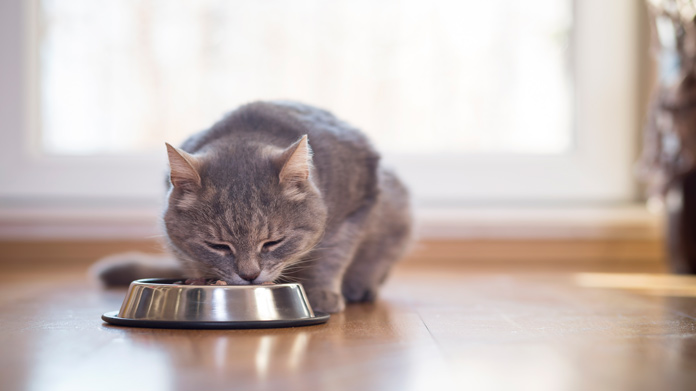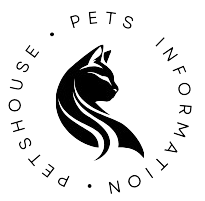
In the symphony of pets food, a harmonious tune is emerging—one that resonates with both the discerning pet owner’s desire for nourishment and the planet’s call for ecological balance. This orchestrated melody is none other than the concept of Cost-Effective Sustainability in the realm of pets’ gastronomic delights. Let’s embark on a journey where the pursuit of quality nutrition seamlessly intertwines with an economically conscious approach, creating a sustainable rhythm that echoes far beyond the pet bowl.
A New Dawn: Defining Cost-Effective Sustainability in Pets Food
As the sun rises on a new era of pets food, Cost-Effective Sustainability emerges as a beacon guiding the industry towards a more responsible and economically viable future. It signifies a departure from the notion that sustainable practices are synonymous with high costs. Instead, it paints a picture where ecological harmony and financial sensibility coalesce, forming the canvas upon which the pets food narrative unfolds.
In this paradigm, the quest for sustainability is not a luxury; it’s a pragmatic choice that aligns with the economic considerations of both pet owners and industry players. The definition of value extends beyond the price tag, embracing the broader context of environmental impact and long-term resource efficiency.
Ingredients with a Purpose: The Cornerstone of Sustainable Nutrition
At the heart of Cost-Effective Sustainability lies a meticulous selection of ingredients with a purpose. It involves sourcing high-quality, nutritious components that not only meet the dietary needs of pets but also align with sustainable and ethical standards. Imagine pets food enriched with proteins derived from responsibly raised livestock, and grains cultivated through regenerative farming practices.
These purposeful ingredients form the bedrock of sustainable nutrition, creating a foundation where pets thrive while minimizing the ecological footprint. The synergy between nutrition and sustainability becomes a testament to the idea that every bite has a broader impact on the planet’s health.
Circular Economy Practices: Beyond Linear Consumption
In the pursuit of Cost-Effective Sustainability, the concept of circular economy practices takes center stage. It transcends the linear model of production and consumption, envisioning a closed-loop system where waste is minimized, and by-products are repurposed. Picture a pets food brand that not only prioritizes the quality of its meals but also integrates a circular approach, ensuring that the entire production process aligns with sustainability principles.
The circular economy practices become a testament to efficiency, where every element in the pets food production chain serves a purpose beyond its initial use. From repurposing by-products to minimizing packaging waste, the circularity embodies an ecological ethos that resonates with cost-effectiveness.
Sustainable Sourcing: Nurturing Ecological Harmony
Sustainable sourcing emerges as a pivotal element in the symphony of Cost-Effective Sustainability. It involves a conscientious selection of suppliers and partners who share the commitment to ecological harmony. Envision pets food brands that collaborate with farmers practicing agroforestry, ensuring that the sourcing of ingredients contributes positively to ecosystems.
This nurturing of ecological harmony through sustainable sourcing is not merely an idealistic endeavor; it’s a pragmatic choice that recognizes the long-term value of preserving biodiversity, maintaining soil health, and supporting communities. The ripple effect extends from farms to pet bowls, creating a holistic narrative of sustainability.
Efficient Manufacturing Processes: Streamlining for Sustainability
In the pursuit of Cost-Effective Sustainability, the manufacturing processes of pets food undergo a transformative streamline. Efficiency becomes the watchword, optimizing resource use, and minimizing energy consumption. Picture a production facility where precision and technology converge to create meals with a minimal environmental footprint.
Streamlining manufacturing processes doesn’t just enhance sustainability; it contributes to cost-effectiveness by reducing waste, lowering energy bills, and maximizing the utilization of raw materials. The marriage of efficiency and sustainability becomes a testament to the pragmatic harmony sought in the evolution of pets food.
Innovative Packaging Solutions: Balancing Ecology and Economy
In the world of Cost-Effective Sustainability, packaging solutions become a canvas for innovation. Picture pets food bags crafted from recyclable and biodegradable materials, adorned with minimalist designs that celebrate both ecology and economy. The quest for innovative packaging solutions is not just about reducing environmental impact; it’s about finding the delicate balance where sustainability doesn’t come at the cost of economic feasibility.
These solutions, whether compostable pouches or lightweight materials, embody the essence of Cost-Effective Sustainability—a convergence where ecological responsibility meets practicality. The packaging becomes a silent ambassador of the values embraced in the pets food industry, resonating with pet owners who seek both quality nutrition and environmental mindfulness.
Transparency in Communication: Empowering Informed Choices
Communication takes center stage in the narrative of Cost-Effective Sustainability. Transparent labeling, clear messaging, and a commitment to open communication empower pet owners to make informed choices aligned with their values. Imagine pets food brands that not only showcase the nutritional content of their meals but also provide insights into the sustainability practices integrated into their production.
Transparency becomes a bridge between the pets food industry and its consumers, fostering trust and allowing pet owners to navigate the landscape with confidence. The empowerment of informed choices is a cornerstone in the coalescence of cost-effectiveness and sustainability.
Localized Supply Chains: Minimizing Environmental Impact
In the pursuit of Cost-Effective Sustainability, the concept of localized supply chains gains prominence. Brands explore the advantages of sourcing ingredients locally, minimizing the environmental impact associated with long-distance transportation. Picture a pets food brand that not only prioritizes the quality of its meals but also fosters relationships with local farmers and suppliers.
This localized approach doesn’t merely contribute to sustainability; it also aligns with economic considerations by reducing transportation costs and supporting local economies. The idea is to create a network where pets food production becomes a community-centric endeavor.
Consumer Education: Bridging the Gap Between Perception and Reality
As Cost-Effective Sustainability unfolds, consumer education becomes a pivotal element in bridging the gap between perception and reality. Brands invest in initiatives that inform pet owners about the true cost of sustainability and how it aligns with economic considerations. The narrative shifts from the perception of sustainable practices as expensive to an understanding that they can be both economically viable and environmentally responsible.
Imagine a pet owner who not only seeks quality nutrition for their furry companion but also understands the long-term value of supporting brands committed to Cost-Effective Sustainability. Consumer education becomes the catalyst for a paradigm shift, where sustainable choices are embraced as a pragmatic and economically sound decision.
Conclusion: The Symbiosis of Economics and Ecology in Pets Food
In conclusion, the journey into the world of pets food unveils a symbiosis—an intricate dance between economics and ecology embodied in Cost-Effective Sustainability. It’s a melody where the pursuit of quality nutrition harmonizes seamlessly with the imperative of ecological responsibility. As pet owners navigate the choices available, they find solace in the fact that the nourishment they provide to their pets can coexist with economic considerations and environmental mindfulness. In this symbiotic dance, the future of pets food becomes a rhythm that echoes not only in the bowls of our companions but reverberates through the sustainable heartbeat of our planet.
